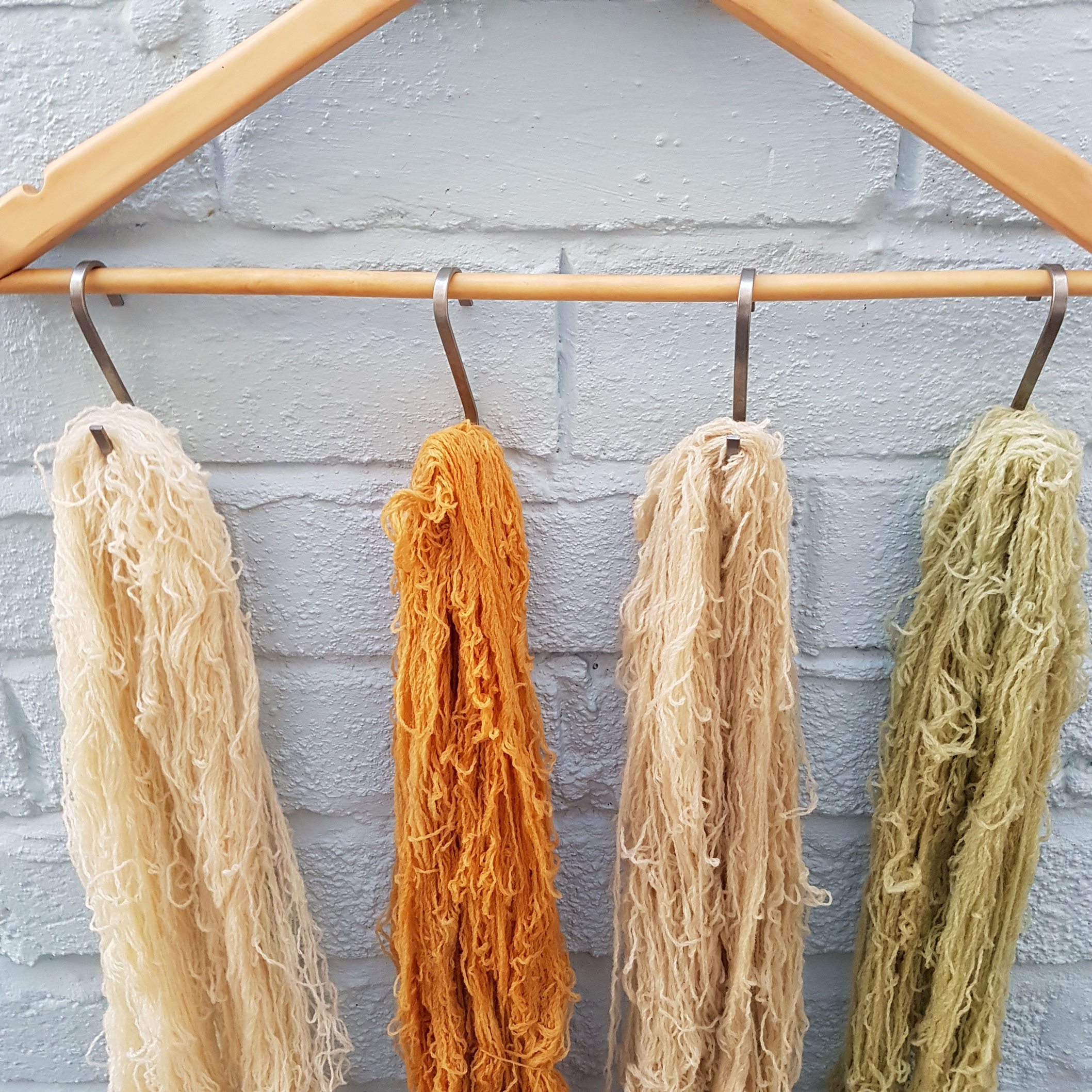Mordant Trials
Note before reading: This blog was written in 2017, when I was studying for my MA (hence the Harvard referencing!). Where needed, I have edited these posts to correct any factual inaccuracies. This post was last edited Jan 2025.
For better information on the use of mordants to prepare yarns, check out my book Dyeing Yarn Naturally!
Mordants are used before dyeing to help natural dyes 'fix' to the fibre, and improve colour and its light and washfast properties. There are several different mordants, and I am going to work with four: alum, copper, iron and rhubarb leaf. Chrome and tin can also be used, however according to Jenny Dean they are "they are toxic, difficult to handle safely and disposal of...residues may present problems" (2009), and so I am not going to use them.
The three chemical mordants I will be using are alum, copper and iron, and have been purchased as a sulphate powder - alum is safe to handle whereas copper and iron should be handled with gloves on. Alum solutions can be safely disposed of down the drain as long as "they are well diluted with water" (Dean, 2009). Copper and iron can be toxic in waterways, and so needs to be disposed of carefully on the ground.
Using chemicals to 'naturally' dye materials seems a little counter intuitive! I am going to do some more research as to how sustainable and safe they are. The fourth mordant - rhubarb, was made by boiling rhubarb leaves from my Mum's organic garden. Making this mordant releases toxic oxalic acid, and so I made this outside.
Christina Chisolm in the Journal of Spinners, Weavers and Dyers (2017) explains that using different mordants can affect the final colour of the dyed fibre - so there are aesthetic outcomes to consider, as well at the sustainability and lightfast considerations.
I made 4 x 50g skeins of British Lambswool from Yeoman Yarns and scoured them in hot water for 1 hour, as per Vejar's guide in The Modern Natural Dyer.
The skeins were then individually mordanted according to the recipe in Dean's Wild Color. In here it says that iron can degrade wool, and so perhaps this shouldn't be used. As always, I have been making thorough notes in my dye journal as I go along.
L-R: Alum, Iron, Rhubarb and Copper Burns, R. (2017) Mordant Trials. (Own Collection)
The end results have quite a stark colour difference, with only the alum treated skein retaining the original colour of the of the yarn. It will be really interesting to see how this will affect the final colour of the yarn once it is dyed...
References:
Burns, R. (2017) Mordant Trials. (Own Collection)
Chisholm, C. (2017) An Alternative Approach to Conventional Mordanting. Journal for Weavers, Spinners and Dyers. Issue 263, p 20-23.
Dean, J. (2009) More about Mordants. [Online.] [Accessed 24 October 2017.] Available from: http://www.jennydean.co.uk/more-about-mordants/
Dean, J. (2010) Wild Color. Octopus Publishing Group: London.

